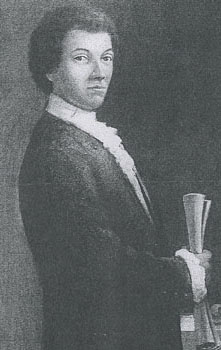
Odet Philippe (1780-1869)
Inducted 1963
Highlights
Tampa Bay
St. Helena
Hillsborough County
Budwood
A.L. Dunca
Bio
Count Odet Philippe is undoubtedly one of the most interesting characters in the Florida Citrus Hall of Fame. As the first non-native permanent settler in Pinellas County, considerable legend surrounds Philippe. Much of what is attributed to his background was likely fabricated by Philippe himself, which has been repeated throughout the generations. While separating fact from fiction in the case of Phillipe’s origins is difficult, however, it is important to note that he was not inducted into the Hall of Fame due to his potentially fabricated history, but instead because of his well-known and valid contributions to citrus following his settlement in Florida.
Philippe was originally of French descent, born in 1789 in Lyons. He reportedly was a childhood friend of Napoleon, eventually becoming the chief surgeon of the French Emperor’s army. He was also said to be a nephew of King Louis XVI. The legends continue with Philippe being captured by the British at the Battle of Trafalgar in 1806, leading to his release into the Americas on the promise that he never return to French service. At various ports of call in American and Caribbean locales, he used his ability to heal to gain favor with a variety of characters and people, including the famed pirate Gomez. From him, Philippe learned of the uninhabited “Espirito Santu Bay,” what is now known as Tampa Bay.
Historical records do not agree with many of these claims, and it is highly likely that Philippe never received any formal medical training nor would he have been a childhood friend of Napoleon, since the two were likely nearly 20 years apart in age. It is also very unlikely that Philippe ever came into contact with the pirate Gomez. Philippe’s biographer Allison DeFoor in Odet Philippe: Peninsular Pioneer, (1997), also discounts the likelihood of the above facts but has carefully traced Philippe’s antecedents in Haiti, Charleston, Key West, before coming to Tampa Bay.
Regardless of his past, Philippe did sail his ship, the Ney (named after Napoleon’s ship), into Florida waters on several occasions. He intially made settlement attempts on Florida’s eastern shore but was driven off by Native Americans. He had better luck when he landed on Florida’s west coast around the time of Spain’s ceding of Florida in 1821. On the shores of what is now known as Old Tampa Bay and near the present-day Tampa suburb of Safety Harbor, Phillipe established a plantation named St. Helena. An old Indian mound sat near his landing site, and he constructed his homestead close to the edifice.
Philippe, the first settler in the region, planted a variety of citrus and other fruit products, most notably grapefruit but also including oranges, limes, avocados, pears, and bananas, all of which he had acquired during his time in the Caribbean. The grove he established was the first post-colonial commercial grove in the relatively unsettled territory of Florida and the first on the west coast. His plantation was ravaged by a fierce hurricane in 1848, but the Indian mound protected his holdings from more significant damage and Philippe rebuilt his homestead.
Philippe’s efforts not only led to the spread of citrus in Hillsborough County, but also to the settlement and development of the region to begin with. He was known for sharing generously with his neighbors, and he often handed out budwood and instructions on how to convert wild sour orange tree into producers of sweet oranges. He also experimented a great deal with budding and grafting on his citrus trees. Grapefruits, which were at the time considered a “rich-man’s dish,” were Philippe’s primary citrus crop. Philippe gave A.L. Duncan a seedling derived from seeds he had obtained in Cuba in 1840, and Duncan turned these into the popular Duncan grapefruit variety. When grapefruit became a more popular crop in the late 19th century, its success could be attributed to Philippe’s work with the crop in the first half of the century. Although it lacks the benefits of concentrate that orange juice possesses, grapefruit now accounts for one fifth of citrus production in the Sunshine State.
Philippe, who passed away in 1869, was buried on the grounds of his estate. Where Philippe’s plantation once stood is the present day location of Philippe Park, a 122-acre facility owned and operated by Pinellas County. The original Indian mound still sits on the property, while a marker commemorates where Philippe’s groves originally stood.
While he may not have actually served as Napoleon’s chief surgeon, Count Odet Philippe’s real-life accomplishments were every bit as relevant and important as those that may be falsely attributed to his name. In a state dominated by citrus, Philippe was a pioneer in every sense of the word, literally bringing citrus to places in Florida which it had not been previously. It is for these accomplishments that he was inducted into the Florida Citrus Hall of Fame in 1963.
